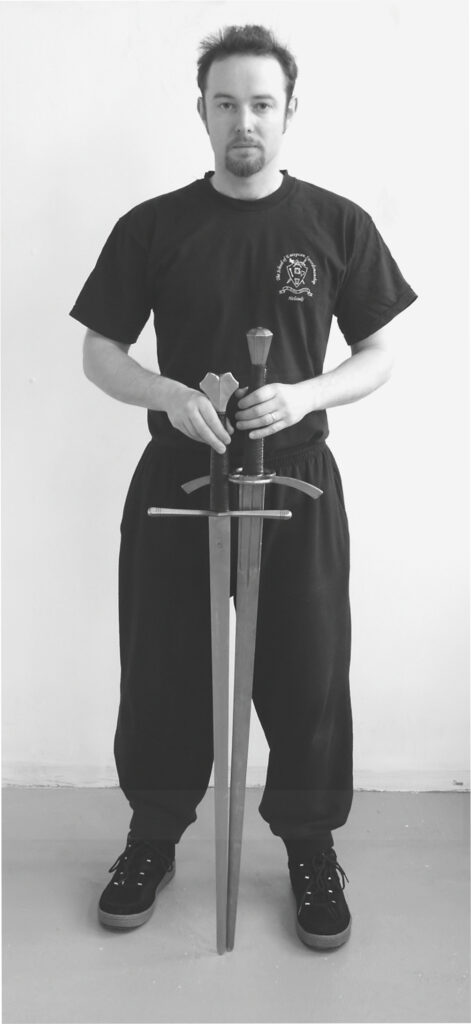Good morning, and Happy Monday.
When I got back to my salle last week, after a 3 month absence, I found two rather hastily constructed Marozzo stars on the floor, left over from Ilkka Hartikainen's Bolognese swordsmanship seminar. I have always liked the design (readers of my The Swordsman's Companion will remember there's a reproduction of it on page 82) and it makes teaching some footwork patterns much easier.

Plus, I love geometry.
So I decided to start by ripping up the crappier of the two stars (in peeling electrician's tape, not centred according to any logic, nor put together to within any identifiable tolerances, and clearly knocked up in 10 minutes at the beginning of a seminar), and redoing it to my standards. We started by drawing a straight line from one side of the salle to the other, parallel to the longest wall, and located by centering it on the wall pillars. This line was 629″ long [Europeans: 1 inch is 2.54 cm. Do the maths! When working with proportions, I always think in inches.], so we ran a tight string from one point to the other, and then I went along with a 4′ straight edge [1 foot is approx 30 cm] and an indelible marker. Then Zoe, Janne and I spent nearly an hour deciding on exactly where the centre point of the star should be. We eventually settled on siting it so that the North point and the East point were both accurately aligned with the two thrusting targets fixed to the pillars. (The original was placed any old how.)

From there, using a trammel beam, my large self-made dividers (in ash wood), and a long straight edge, we drew the perpendicular line from the centre, and, most difficult, drew the large circle. It has a radius of 51″, because my inside leg measurement is 34″, and my long pace guard position varies between 32 and 37″ depending on circumstance. 34 x 3 = 102. 102/2=51. The inner, smaller circle has a radius of 17″.
I finished the star the next day. Marking the diagonals and so on was very simple. [If you would like me to write up full geometrical instructions, let me know and I'll shoot a video.] At the moment it is just in indelible pen. I will buy some floor paint and paint it in one day soon…
Anyhow, last Thursday I was in the salle, in a geometrical mood, when I got talking to Ville Tilvis (who readers of The Swordsman's Companion will know from the photos on pp 125-7) about the volta stabile. I do it as a 135 degree turn. That got Ville (a maths teacher) thinking… and he came up with a very elegant and (as he is the first to say) rather useless but (I think) extremely cool proof regarding the optimal ratio between guard width and guard length, for a perfect volta stabile. It's 1:1+√2, or approximately 1:2.41

So, given a guard length of eg 34″, measured from ball of the foot to ball of the foot, your feet should be 14.1″ apart.
You can download Ville's article here: volta-stabile geometry.

